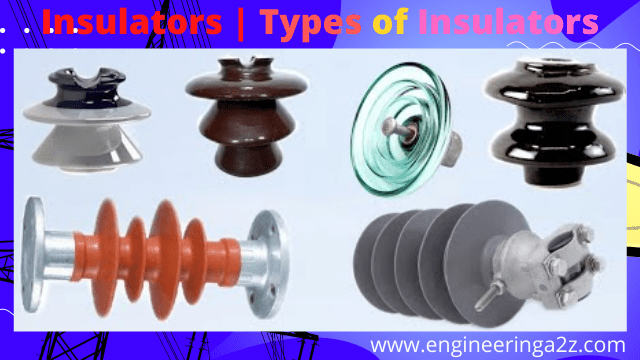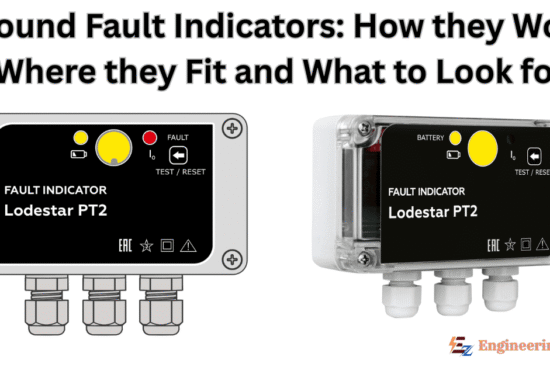
Table of Contents
Insulators
An electrical insulator is a substance that prevents electric current from flowing freely. The electrons in the insulator’s atoms are closely bonded and cannot easily travel. Other materials, semiconductors, and conductors are better at conducting electric current.
Types of Insulators
- Pin type insulators
- Suspension type insulators
- Strain type insulators
- Shackle insulators
- Egg or stay insulators
1. Pin Type Insulators
For lower voltage transmission lines, the pin type insulator is designed to be mounted on a pin which is turned and installed on the cross section of the pole. Generally, one-piece types of insulators are used. For higher voltage transmission lines, larger and stronger pin types of insulators are used. They are used for telephone lines and overhead lines for low voltage. They are used up to 33kv. The insulator is built up into various curved surfaces facing downward in order to increase the surface area that remains dry even during rain.

2. Suspension Type Insulators
When the voltage is above 33 KV, the pin type insulator becomes costly, bulky, and complicated in construction. Therefore, for voltages above 33kv, suspension insulators are used. They consist of a number of porcelain discs connected in series by means of mechanical links. The suspension insulator hands from the cross arm of the pole tower and the line conductor is attached to its lower end. Because there is no pin problem, we can put any distance between the suspension insulator and the conductor just by adding more insulator to the string. The entire unit of suspension insulator is called a string.

3. Strain Insulators
Sometimes a line is to withstand great strain, for instance at the dead end or at a corner or sharp turn. In such cases, shackle insulators are used for LT lines, but not for HT transmission lines. These insulators are used at the dead ends of the line. These insulators are used for voltages above 11KV. They consist of an assembly of suspension insulators as shown in the figure.
Two or more strings of suspension insulators are used in parallel when the tension is extremely high. The discs of strain insulators are employed in a vertical plane, where as the suspension insulators are used in a horizontal plane. Because of its particularly important job, the strain insulators must have considerable strength as well as the necessary electrical properties.

4. Shackle Type Insulators
This is used for low voltage distribution below 11KV. The shackle insulators can be used in both vertical and horizontal positions. The shackle or spool type insulator, which is easily identified by its shape, is usually used on LT lines. Both low voltage conductors and the house service wires are attached to the shackle insulator. The conductor is fixed in the groove by means of binding wire, just as a shackle insulator is fixed to a pole as shown in the figure.

5. Stay or Egg Insulators
Such insulators are egg-shaped and are used for guy cables where it is necessary to insulate the lower part of the cable. It is used for the safety of people and animals on the ground. These are provided at a height of about 3 m from the ground level. This type of insulators consists of a porcelain piece with two holes at right angles to each other through which the two ends of the guy cables or wires are looped.

Frequently Asked Questions (FAQs)
-
Why do we use insulators in transmission line?
Insulators are used in electrical equipment to support and isolate electrical wires while preventing current from flowing through them. They bear the weight of the dangling wires while preventing current from flowing through the tower to the ground.
-
What type of insulator is used at dead ends or sharp curves?
Strain type insulators are used at the end of the transmission line. Sometimes a line is to withstand great strain, for instance at the dead end or at a corner or sharp turn. In such cases, shackle insulators are used for LT lines, but not for HT transmission lines. These insulators are used at the dead ends of the line. These insulators are used for voltages above 11KV.
-
Which material is used to make insulators?
Glass, porcelain, and composite polymer materials are used to make high-voltage power transmission insulators.











Comments (1)
I have not seen such content till now you are great bro.
Great content